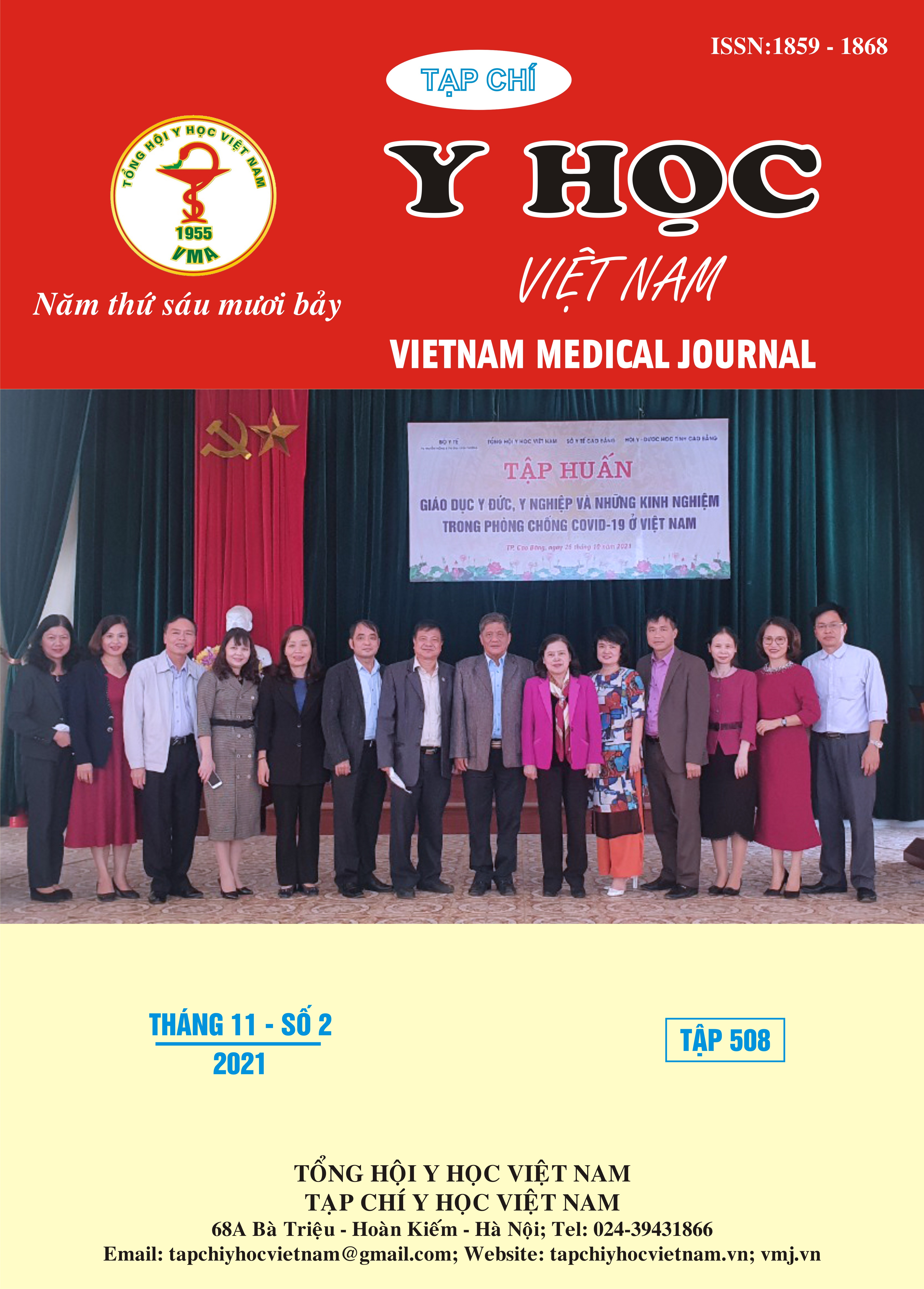CLINICAL AND SUBCLINICAL CHARACTERISTICS OF PATIENT WITH BACTERIAL VAGINOSIS AT NATIONAL HOSPITAL OF DERMATOLOGY AND VENEREOLOGY
Main Article Content
Abstract
Objectives: To investigate clinical and subclinical characteristics of bacterial vaginosis (BV) at National Hospital of Dermatology and Venereology from August 2020 to August 2021. Population and methods: Cross-sectional description of thirdty-nine patients with bacterial vaginosis who were diagnosis by Amsel’criteria. Results: BV was common in the age group of 18-30 years old (66.6%). History of obstetrics and gynecology related to abortion 33.3%, miscarriage 10.3%. The majority of patients had patient’s symptoms (61.5%), in which, vaginal odor (79.5%), itching (48.7%), painful intercourse (33.3%) were common. Vaginal examination detected 61.5% of cases of red inflammation, most of the fluid was 69.2%. Sniff test and clue cells were positive in 100% of cases, 66.7% had gram-negative bacilli of 2+ or more, 94.9% had 1+ or less of lactobacilli, lactobacilli IIb accounted for 51.3%, grade III 23.1%. Classification of microorganisms according to Nugent had 59% from 4-6 points and 41% from 7-10 points. Conclusion: Bacterial vaginosis tends to be seen in younger women, is associated with a history of pregnancy, and presents with disturbances in the vaginal flora.
Article Details
Keywords
Bacterial vaginosis, lactobacilli
References
2. Kamga Y.M., Ngunde J.P., Akoachere J.K.T. (2019). Prevalence of bacterial vaginosis and associated risk factors in pregnant women receiving antenatal care at the Kumba Health District (KHD), Cameroon. BMC Pregnancy Childbirth, 19(1), 1-8.
3. Lê Hiếu Hạnh, Lê Thái Vân Thanh, Văn Thế Trung (2019). Viêm âm đạo và các yếu tố liên quan ở bệnh nhân nữ tại Bệnh viện Da liễu TP. Hồ Chí Minh. Y học TP. Hồ Chí Minh, 23(1), 38-44.
4. Đinh Thị Huyền Ngọc (2013), Nghiên cứu hiệu quả điều trị của Gynoflor trong viêm âm đạo không đặc hiệu tại Bệnh viện Phụ Sản Trung Ương, Luận văn Thạc sỹ y học, Đại học Y Hà Nội.
5. Faisal M.M., Abdel-Gawad M.M., Fahmy R.A. et al (2019). Change in Vaginal Flora as Indicated by Pap Smear (Schröder’s Classification) in Women Using Levonorgestrel-Releasing Intrauterine System “Mirena”—Prospective Cohort Study. Open Journal of Obstetrics and Gynecology, 9(5), 631-642.
6. Ranjit E., Raghubanshi B.R., Maskey S. et al (2018). Prevalence of Bacterial Vaginosis and Its Association with Risk Factors among Nonpregnant Women: A Hospital Based Study. Int J Microbiol, 2018, 1-9.
7. Tamrakar R., Yamada T., Furuta I. et al (2007). Association between Lactobacillus species and bacterial vaginosis-related bacteria, and bacterial vaginosis scores in pregnant Japanese women. BMC Infectious Diseases, 7(1), 128.
8. Chooruk A., Utto P., Teanpaisan R. et al (2013). Prevalence of lactobacilli in normal women and women with bacterial vaginosis. J Med Assoc Thai, 96(5), 519-522.
9. Yan D.H., Lü Z., Su J.R. (2009). Comparison of main lactobacillus species between healthy women and women with bacterial vaginosis. Chin Med J (Engl), 122(22), 2748-2751.


